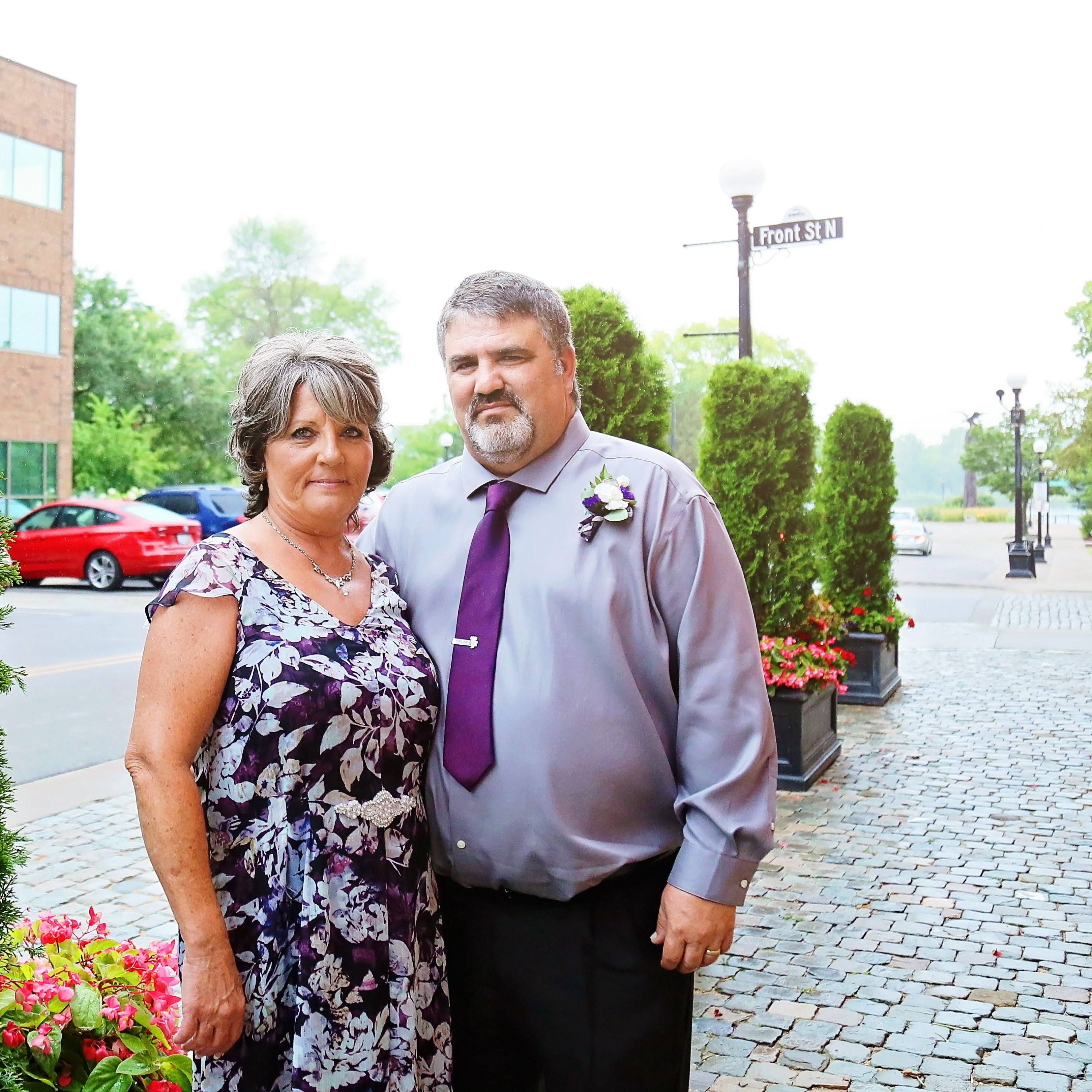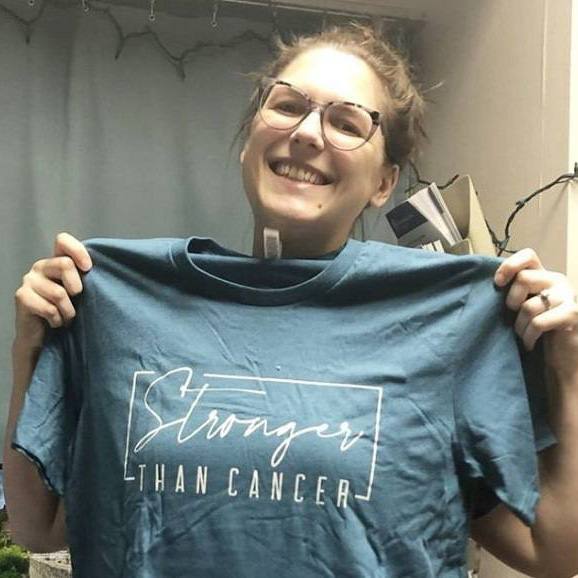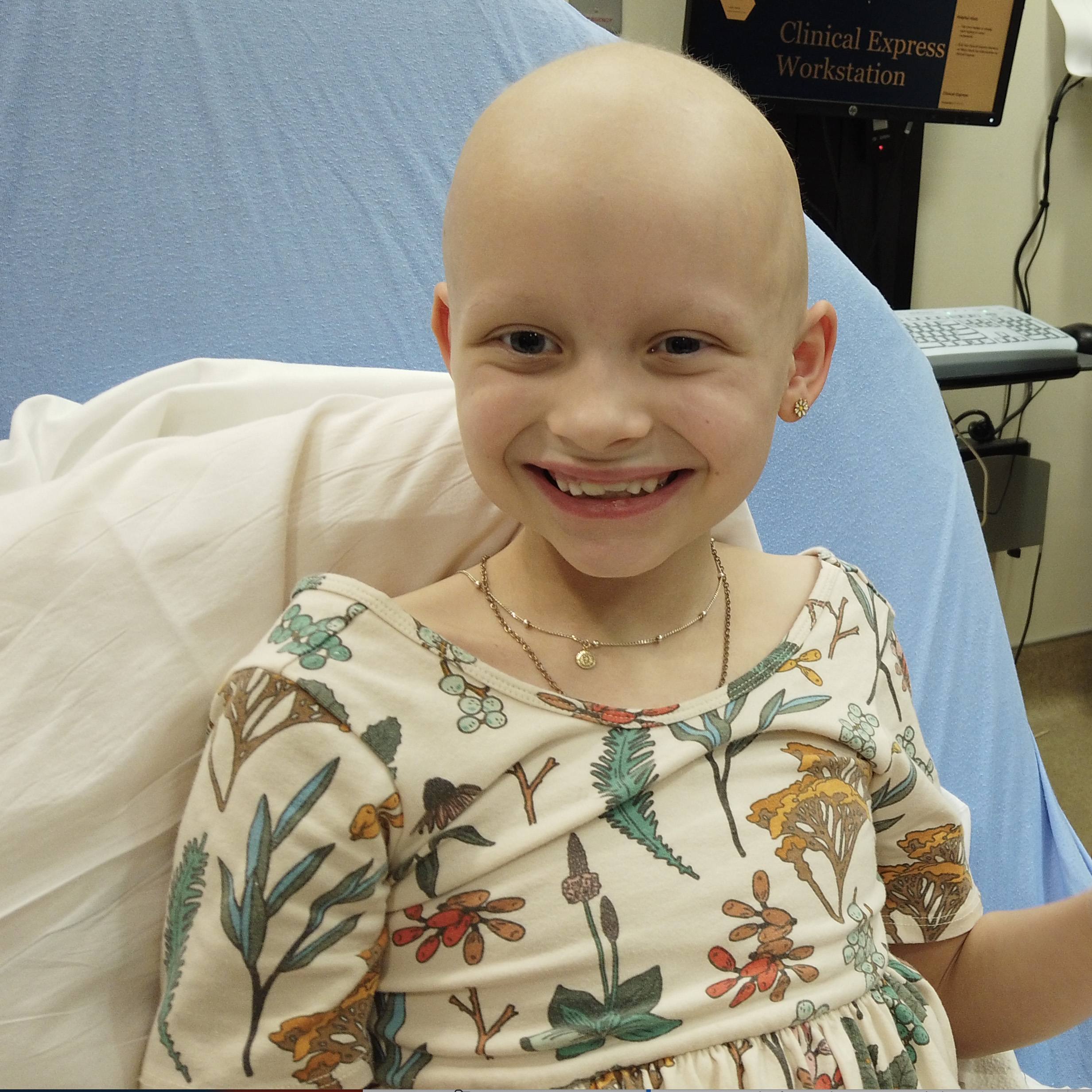 When your body needs water, you feel thirsty and drink. It's a pretty simple concept, but one that no longer works for Laurie Beach. A rare brain tumor left her with adipsic diabetes insipidus, an extremely rare disease that causes the body to lose its thirst response.
When your body needs water, you feel thirsty and drink. It's a pretty simple concept, but one that no longer works for Laurie Beach. A rare brain tumor left her with adipsic diabetes insipidus, an extremely rare disease that causes the body to lose its thirst response.
The tumor — a supra cellar germinoma (or germ cell cancer) — is a very rare central nervous system tumor, always occurring somewhere in the midline of the body. Although some researchers theorize that leftover embryonic tissue goes awry, the exact cause of germinoma cancers remains a mystery.
Telltale signs
Although diagnosed at age 22, Laurie's symptoms began at 16, when her monthly periods ceased. While amenorrhea can signal an endocrine problem, Laurie was athletic and lean, so in the absence of other symptoms, no testing was ordered. She became increasingly defiant and rebellious, but her parents attributed this to being a moody teenager. As an only child, it hurt as Laurie pulled away from her mother and preferred to be alone. "That was the first time I felt like I was losing her," says Laurie's mother, Chris Den Ouden.
"After high school graduation, she spent a couple of weeks with her uncle in California," recalls Chris. "I remember how shocked my brother was that she drank so much water." But Laurie's severe craving for ice water began shortly after her periods stopped. "We didn't realize it at the time, but that's another symptom of diabetes insipidus," says Chris.
After high school, Laurie began college near home — in northwest Missouri — seeking a degree in journalism. "I went through college earning excellent grades and enjoying my studies and newfound freedom," recalls Laurie, "but in my final semester things started to happen that couldn't be explained."
For example, Laurie was extremely tired all the time. "I would fall asleep walking to my classes," she says. Her grades suffered because she couldn't always attend school and had difficulty keeping up with her studies. Her body increasingly demanded sleep.
"I took a copy editing position starting the Monday after I graduated," remembers Laurie. It was a 30-minute drive to her job in Atchison, Kansas. "Not only was I nodding off at work, but I would stop half way into my commute, pull over at a convenience store and nap in order to finish the drive," she recalls. "Then, I got an apartment in Atchison just so I could go home and sleep on my lunch hour."
Laurie's job performance wasn't the great first impression she would have wanted, but she didn't know why. Her eyes were extremely dry and her vision failing. "When I realized I was enlarging the screen to 400 percent to see it clearly, I knew something was very wrong," she says. Laurie made an appointment with an ophthalmologist, who was unable to determine what was wrong and referred her to a rheumatologist. He diagnosed her with Sjogren's Syndrome, an autoimmune disorder. He put her on medication, but it didn't resolve any of her symptoms.
With worsening symptoms and no answers, Laurie and her family were getting frustrated and worried.
Looking for answers
"My mother was an advocate for me and convinced my doctors to refer me to an endocrinologist," says Laurie. "She is a nurse and her motherly and medical instincts told her that something was wrong."
Laurie's endocrinologist ordered a CT scan, which detected a tumor in the center of her brain. And while he didn't know how large or what type it was, it took only one question to determine their course of action. "What would you do if this were your child," Laurie's parents asked the endocrinologist. "Without any hesitation or reservation he answered 'Take her to Mayo Clinic'," remembers Laurie.
The family was able to get an appointment the following week with specialists at Mayo Clinic in Rochester, which astonished them. "It was Easter weekend and we were having company, so we went through all the activities, cleaned up, packed up and left on Easter Sunday for Rochester," remembers Laurie.
The ensuing week was a bit foggy for Laurie, who was very ill by the time she was seen by Mayo Clinic endocrinologist Daniel Hurley, M.D. "The humility of the doctors at Mayo Clinic is incredible," says Laurie. "It's amazing that I remember this, because I don't recall that much about my visit." Dr. Hurley knew that very few physicians had experience with adipsic diabetes insipidus, so he referred Laurie to colleague Bryan McIver, M.D., who he thought could better provide care for Laurie. "It's amazing how they all teach and respect each other," she says. "I haven't seen that anywhere else I've been."
Getting treatment
"I'm told that Dr. Joon Uhm was the first brain oncologist that I saw," says Laurie, who became so ill that she actually stopped breathing at one point before beginning treatment. "That was the second time I thought I was losing her," says Laurie's mother. It was Fred Meyer, M.D., a Mayo Clinic neurosurgeon, who drained fluid from her brain to relieve the pressure on the brain stem, which regulates respiration. Laurie was stabilized, but the question of what to do about the tumor remained.
To determine an appropriate treatment plan, Laurie was put in the hands of medical oncologist Timothy Moynihan, M.D. "The tumor had destroyed Laurie's pituitary and hypothalamus glands," explains Dr. Moynihan. "The pituitary gland controls hormone production, so this is why her monthly cycle ceased," he explains. "And diabetes insipidus resulted from the hypothalamus gland no longer functioning."
"You will not believe what happened next," recalls Laurie. "Dr. Moynihan consulted with another physician and it was the same doctor who provided treatment advice for Lance Armstrong, who also had a germinoma cancer." Later on, Laurie would email Dr. Larry Einhorm in Indiana to thank him for his helpful advice.
"On average, I would estimate that Mayo Clinic sees only two cases per year of intracranial germinoma cancer," says Dr. Moynihan. "It's extremely rare."
"These types of tumors are curable because they are highly responsive to external beam radiation," explains Dr. Moynihan. A mask was made for Laurie to pinpoint the radiation directly to the tumor without destroying any surrounding brain tissue. Over a two-month period, Laurie had 28 radiation treatments. She did not require chemotherapy as the radiation successfully obliterated the tumor. Her only continuing treatments are replacement hormones and vasopressin nasal spray to control her diabetes insipidus.
Finding her way back
After treatments, Laurie started a new life. While all her other friends were getting married and starting families, she was dealing with regulating her blood sodium through weekly blood draws. "I've learned to recognize the symptoms of dehydration and high sodium levels and adjust accordingly," she says. "However, I prayed that someday I would find someone who could deal not only with my chronic condition, but the fact that I would likely never be able to have a child."
Laurie's prayers were answered when she met Nathan Beach. Together, they are partners in her health and have decided to pursue adoption. She's been cancer-free for seven years and is proudly putting that part of her life behind her, while remembering the humbling disease and how it shaped her life.
"Mayo Clinic saved my life and taught me how to live with a rare disease as a result of the tumor," she says. "I was treated by so many doctors that I feel we are all part of one big team."
"The likelihood of any reoccurrence diminishes with every year," says Dr. Moynihan. "Laurie's positive attitude was a big factor in her successful treatment and recovery," he says.
"My faith in God, who hears and answers my prayers, is what guided me through my ordeal," says Laurie. "I prayed for skilled care providers and the courage to face all challenges in my life as a result of this disease. I feel that my tumor was a wake-up call from God for me to take a serious look at my life and my future. I have a new outlook on life and thanks to my family and Mayo Clinic, I am here today and wouldn't change anything."
Mayo Clinic — one of the largest brain tumor centers in the world — treats more than 3,000 patients with brain tumors each year. Our neurologists and neurosurgeons are considered international authorities in diagnosing and treating such tumors. For more about diagnosis and treatment options, go to: www.mayoclinic.org/brain-tumors.







